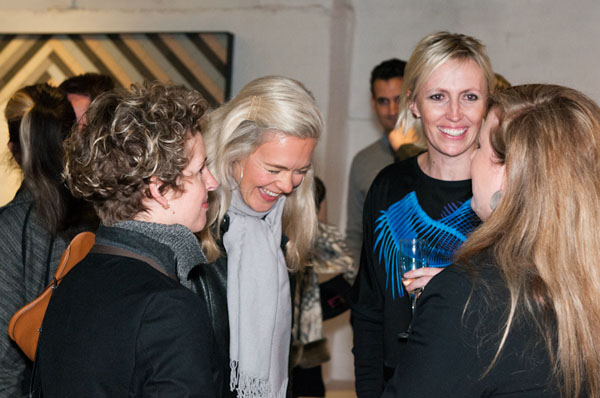Japanese office furniture manufacturer Okamura fuses robotic technological innovations with smart design to create even smarter chairs.

June 3rd, 2011
The human body is the inspiration for many an amazing new technology in the field of robotics, and fittingly the technologies have come back around to benefit the human body. Meet Leopard and Luce, two chairs infused with robotic technological innovations.
Leopard was developed when a designer at Okamura saw how a robot leg created by Japanese robotics specialist Oki could jump and land by itself! Amazed, he could not get the images out of his mind and was inspired to develop Leopard.
One of the driving concepts behind Leopard is titled “Seat Cradle Design”: they wanted to create a chair that literally cradles you like a parent would cradle a child. The robot leg technology is instrumental in providing this feature. Derived from the mechanisms that human muscles have, the innovations behind the robot leg were adapted so that Leopard intuitively provides continuous support for every possible posture change.
Leopard’s form stemmed from the need to combine the technology with an advanced sophisticated chair design, and a mesh was specially used for the backrest for the ultimate in soft, sturdy and airy comfort.

Luce
The reaction to Leopard was so heartening that the team behind it realised that a chair like the Leopard, with a little refinement and adaptation, would be perfect in the workplace where people were constantly sitting and standing.
This time, by collaborating with Italian design studio Giugiaro Design as well as Oki, Okamura developed Luce which combines the comforting feel and the soft but sturdy support of Leopard with a polished, airy form.
The Seat Cradle Design was refined so that the mechanism absorbs most of the impact to the body regardless of height or weight, and whether the user is sitting or getting up.
The mesh used for the backrest was given particular attention. It features areas of high weave density in order to support the lumbar region while other areas are left with a broader weave density for a soft fit.
Hero image: Leopard
Okamura
okamura.jp/global
A searchable and comprehensive guide for specifying leading products and their suppliers
Keep up to date with the latest and greatest from our industry BFF's!

Channelling the enchanting ambience of the Caffè Greco in Rome, Budapest’s historic Gerbeaud, and Grossi Florentino in Melbourne, Ross Didier’s new collection evokes the designer’s affinity for café experience, while delivering refined seating for contemporary hospitality interiors.

Savage Design’s approach to understanding the relationship between design concepts and user experience, particularly with metalwork, transcends traditional boundaries, blending timeless craftsmanship with digital innovation to create enduring elegance in objects, furnishings, and door furniture.

The Sub-Zero Wolf showrooms in Sydney and Melbourne provide a creative experience unlike any other. Now showcasing all-new product ranges, the showrooms present a unique perspective on the future of kitchens, homes and lifestyles.

Marylou Cafaro’s first trendjournal sparked a powerful, decades-long movement in joinery designs and finishes which eventually saw Australian design develop its independence and characteristic style. Now, polytec offers all-new insights into the future of Australian design.

Artedomus host an intimate evening to preview the newly refreshed showroom on Church st, Richmond.

Autex Acoustics technical development manager sheds light on the nuances of acoustic design for hospitality settings and the dos and don’ts of restaurant acoustics.
The internet never sleeps! Here's the stuff you might have missed

An entry by MuseLAB, in The Retail Space in the 2024 INDE.Awards, takes shoppers to another planet where diamonds and great interior design make a lasting impression.

The AIA Alta Wellness Haven offers the complete package for health and wellbeing away from the busy city life in Hong Kong and does it through a stellar interior design.